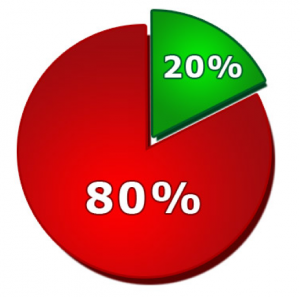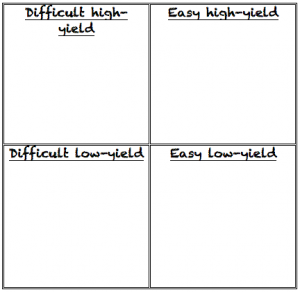A few weeks ago I got into a little bit of a debate on Facebook about juicing. Someone shared a link to an opinion piece on how juicing is bad for you. Although my friend is extremely knowledgeable about health I don’t think he really understood what juicing can be. Done wrong it is a sugar-fest that could do more harm than good. But done right, with good juice recipes, it is the core of health recovery and effective cleansing. Plus it is delicious, extremely energizing, life-affirming, and nourishing at a level that eating or blending can never reproduce.
One of the core principles of healing is to detoxify and re-nutrify your body. Juicing is the key; it is both concentrated nutrition and aids in the detoxification process.
The purpose of juicing is to give your body tremendous amounts of readily available nutrients that you don’t have to work for. By “work” I mean the work of digestion. Digestion takes a lot of energy, and when we are sick, depleted, exhausted, or not digesting properly, it’s just another drain on a limited resource. Have you ever noticed that you have more energy when you don’t eat than when you do? That you feel more sluggish after eating than after skipping a meal? This is because your body is not having to divert energy to digestion. This is one reason people feel so energized from juice. Another is that you are getting more vitamins, minerals, phyto-nutrients, and enzymes than normal, which makes your body HAPPY!
One of the reservations people have about juicing is that you loose much of that wonderful fiber plus some phyto-nutrients when you juice as opposed to eat or blend. This is true, but there are trade-offs. Let’s put trade-offs into perspective: You lose nutrients when you cook, peel, freeze/can, or store your food, but that doesn’t stop most people from doing it. Even if you eat everything fresh and raw you might not be getting all of the available nutrients since raw plant matter can be difficult to digest (and is contraindicated for people with weak digestion, or are sick, to eat a lot of it). And who really wants to eat raw meat anyway?
Blending does help break down the cell walls of fruits and veggies, which makes the nutrients more available for absorption and assimilation (as does juicing), but it would be extremely difficult to consume enough blended produce to give you the same amount of nutrition available in one cup of juice. That said, blending has it’s place: you want to UP the nutritional content of your smoothie, great! Add a handful or two of greens, but don’t kid yourself, this is not in the same league as juicing, nutritionally. Even if you are blending nothing but vegetables, you are still only consuming what you can fit in the blender plus the blending liquid, which dilutes your nutrients.
The big benefit of juicing over blending or just eating is that when you juice you take large amounts of produce and concentrate the nutrients into a form that your body can easily assimilate with very little digestion required. You flood your body with nutrition while allowing it to rest, which creates an environment for deep healing and rejuvenation.
Another reservation people have about juicing is that it contains too much sugar, but that all depends on what’s in the juice. Juice is not all one thing. Which what this article is really about: making great, health restorative juice that looks and tastes fantastic!
The right juice recipes are important. You want it to look good, taste good, and have the right balance of sweet, sour, bitter, and saltiness, without having too high of a sugar content. I’ll share some of my juice recipes, but be sure to invent some of you own as your palate and tastes develop.
A few notes here before I get to the juice recipes:
- All produce should be organic if possible. This is a resource to help you decide what has to be organic and what can be conventional if need be.
- Quantities given will yield approximately one quart + of juice but since the size of produce varies, as do the extraction abilities of various juicers, this is rough.
- Store juice in airtight containers to preserve freshness and nutritional integrity. I like these containers, but mason jars are okay in a pinch.
- Plan to consume your juice within 24 hours, but within 48-72 hours at the very most. The fresher the better since quality goes down quickly over time.
- If you are new to juicing you might need to up the fruit by a little bit in the beginning. As you become accustomed to the flavors, reduce the fruit. Juice should be just sweet enough to be palatable–and no more. The less sugar the better.
- Adjust ratios to suit your taste.
- All produce should be well washed before juicing.
- As you become familiar with juicing make up your own recipes. Experiment. But if you want to avoid drinking brown juice (unappetizing if you ask me), don’t mix reds, greens, and orange too much. Better to make 2 kinds of pretty juice than one ugly one.
Juice recipe #1: Green Apple (my personal favorite!)
- 3 green apples (use tart apples such as granny smith or pippin rather than the sweeter varieties)
- 3 cucumbers — equal amount to the apple (peel on unless it is waxy or bitter)
- 1 jicama, peeled
- 1 -2 large bunch parsley
- 1 lemon
Juice recipe #2: Ruby Watermelon
- 1 personal sized watermelon, peel included, or equivalent amount (be sure to use peel to keep sugar content in check)
- 2 red beets
- 1-2 bunch spinach
- 1 lemon
Juice recipe #3 Pineapple Detox
- 1 pineapple
- 2 bunch cilantro
- 4 cucumbers
- 1 bunch kale
- 1 lemon
Juice recipe #4 Totally Ginger
- 6 carrots
- 1 -2 large orange-fleshed yam, peeled
- 4 cucumbers, peeled
- the light green inner stalks and leaves of celery (equivalent to 3 large stalks)
- 1″ -2″ knob of ginger, peeled
Juice recipe #5 Keto Green
- 2 jicama, peeled
- 2 heads celery
- 4 cucumbers
- 4 leaves of kale or 1 large head of Romain lettuce
Juice recipe #6 Mellow Yellow
- 1/2 pineapple
- 4 peeled cucumbers
- 1 jicama
- 1″ knob turmeric root
Juice recipe #7 Green Sunrise
- 1 pineapple
- 3 bunches celery
- 1 bunch kale
- 1 lemon
Juice recipe #8 Emerald Apple
- 6 apples
- 2 jicama (0r 3 cucumber)
- 2 bunches kale
- 1-2 lemons
Juice recipe #9 Watermelon Stout
- 1 personal sized watermelon, peel included, or equivalent amount (be sure to use peel to keep sugar content in check)
- 2 red beets
- 2 bunches celery
- 1 jicama
Juice recipe #10 Simple Carrot
- 8 carrots
- 4 cucumbers, peeled
- 3 stalks celery
Enjoy!



